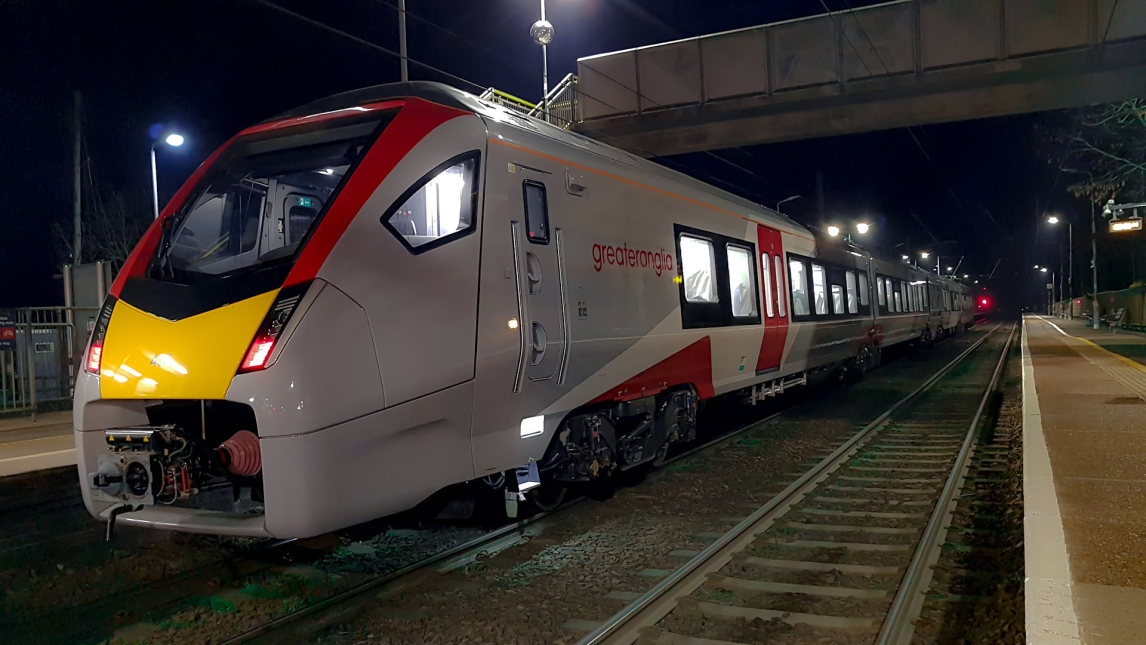Published on: Thursday, 20 December 2018
Last updated: Thursday, 20 December 2018
We have now taken delivery of the first of our brand new trains from Swiss manufacturer, Stadler, and we’re very excited that they’ve arrived.
Before they go into service they have to undergo a series of safety and performance tests – plus our train drivers need to take the trains out for test drives, and other staff including conductors and catering staff also need to familiarise themselves with them.
We have to test the train’s equipment, such as the pantograph (which connects the train to the overhead wire to get power), passenger information system, doors and numerous other on-board systems. We’re looking for any faults that develop after the trains have put some miles on the clock as we want to make sure that when they come into service they’re as reliable as possible.
Many tests take place in the factory, including testing brakes, pantographs, noise levels, emissions, operational safety, and automatic train protection systems. We need to test them further to check how they perform when they are moving, running at speed and in all weather, so we can spot and resolve any teething problems.
We’ve got to test every single train, but not to the same extent. On the first few trains that are built we undertake detailed “type” testing to prove the functionality and performance of the trains. The testing that is performed on every single train is called “routine” testing, which ensures they are built to the same high standard and match the same functionality and performance measures as those recorded during type testing. Emerging from the factory gates, every train undergoes mileage accumulation, whereby all equipment and systems on the train are proofed in “real life” on the network, as if they run in passenger service. Only after the train has passed all of the tests with flying colours is it allowed to enter into passenger service.
How long does the testing take place?
Type testing can take a few months to ensure all systems are tested to prove they function as required. Each trains’ routine testing takes a few days. Mileage accumulation testing is based on a given mileage that each train clocks without developing any defect. As soon as that is achieved, and Greater Anglia is happy with the result, the train is ready for passengers.
Where will the testing take place?
We’re testing our trains all over the Greater Anglia network. We have to take them on the routes where we will be using them, so that drivers are familiar with handling them when they come into service. When we’re testing the new trains on our network we do it mainly at night so that it doesn’t disrupt passenger trains. However, we will also need to test trains during the day, including stopping at stations. Our train planners will schedule the tests so that they do not disrupt customers’ journeys. Look out for the trains out and about the network – take a picture and post it to us on social media using the hashtag #newtrains – we’d love to see your photos.
When will passengers be able to ride the new trains?
The first new trains come into service in the middle of 2019 and they’ll all be in service by the end of 2020.



